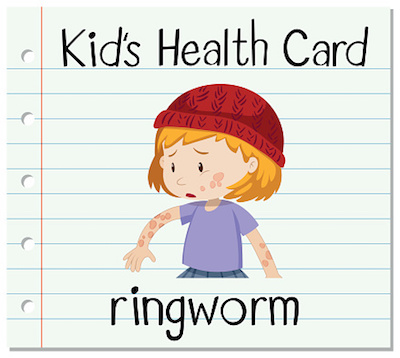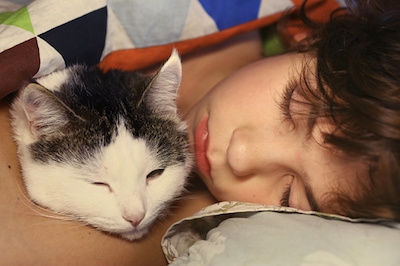Ringworm: a common skin condition you can treat at home
A few weeks ago, I noticed a round, reddened area on my son’s leg. When I asked him what caused it, he told me he got it from falling off his bed. I found it difficult to believe he had fallen on something so perfectly round that it made a complete circle on his leg, and he couldn’t pinpoint anything in his room that caused the mark. (Three-year-olds aren’t the best source of medical information, as you might imagine). I accepted his explanation for a day or two, but when I gave it second look I realized that it wasn’t an injury at all but a ringworm infection.
Since this is such a common occurrence with kids, and sometimes even in adults (I had it myself a few years back), I thought I’d give you a few pointers about how to diagnose and treat this skin infection at home.
Here’s what you need to know:
What is ringworm?
 The name itself is misleading; ringworm has nothing to do with worms of any kind, but it is a common fungal infection of the skin. Both athlete’s foot and jock itch are similar types of skin infections caused by a fungus.
The name itself is misleading; ringworm has nothing to do with worms of any kind, but it is a common fungal infection of the skin. Both athlete’s foot and jock itch are similar types of skin infections caused by a fungus.
Ringworm is easily recognizable because of the characteristic ring shaped-rash. A person with ringworm will often have a superficial circular area of redness that is a little bit raised from the surface of the skin, often appearing scaly. You’ll know it because it will also have an area inside that red ring that is neither red nor scaly. It is itchy and sometimes burns.
Kids often get the infection from puppies or kittens who have it or from playing in the dirt, and it can be passed from person to person either from direct skin-to-skin contact or contact with contaminated objects such as towels, clothing or bedding. Fungal infections tend to thrive in warm, moist environments.
What to do if you think your child has a ringworm infection
 Most of the time, ringworm infection can be easily treated at home with a cream or lotion you can buy from your local pharmacy. If your child has ringworm, you can buy an antifungal cream or lotion with one of the following active ingredients (check the medication label or ask your pharmacist):
Most of the time, ringworm infection can be easily treated at home with a cream or lotion you can buy from your local pharmacy. If your child has ringworm, you can buy an antifungal cream or lotion with one of the following active ingredients (check the medication label or ask your pharmacist):
-terbenafine
-miconazole
-clotrimazole
You should use this cream every day on the affected area of skin and also on the skin just outside the affected area. Continue this for at least two weeks until the area has completely healed. Some physicians recommend continuing treatment with the cream up to seven days after the lesions are gone to prevent recurrence.
If your child has a large area of their body covered in ringworm, if he has a weakened immune system or if the rash has not improved after a week or two of over-the-counter treatment, you should see your pediatrician.
Helpful hints to keep in mind
- Remember that you have to be consistent in applying the topical medication every day for several weeks or else the infection will recur. Set a reminder on your phone if you think you’ll need help remembering.
- When applying the cream, be sure you use a cotton swab or tissue to apply, instead of touching the rash directly with your hands in order to avoid spreading it.
- Wash your hands thoroughly with soap and water after any contact with the affected area.
- Wash clothes, bedding and towels daily in order to avoid further contamination.
- After approximately 2 days of treatment, you’ll should see some improvement in the rash, and ringworm is no longer contagious.
- Since the infection is often transmitted to people from infected dogs or cats, it might be necessary to have your pet treated as well.
- Wash and disinfect areas that are frequented by the pets in your home.







